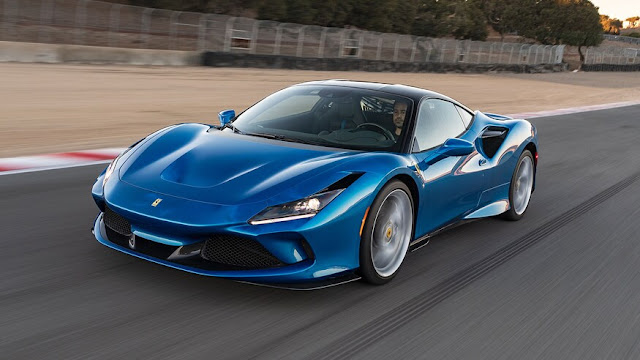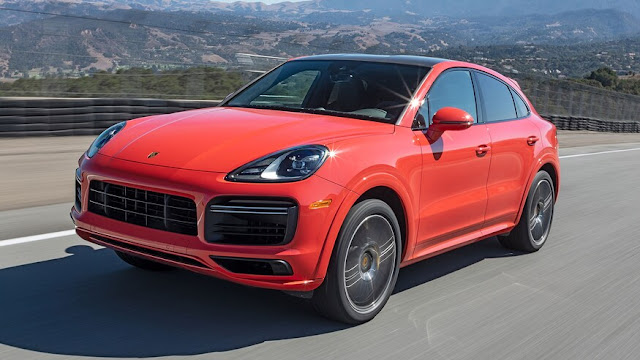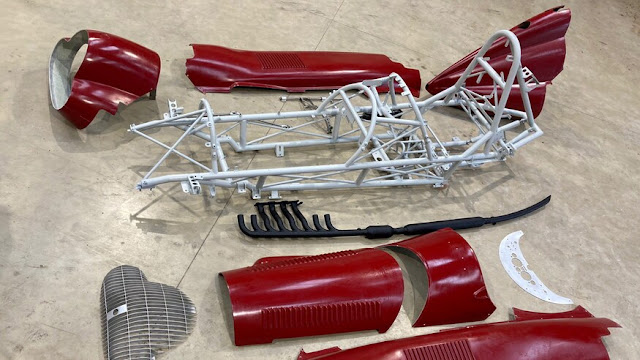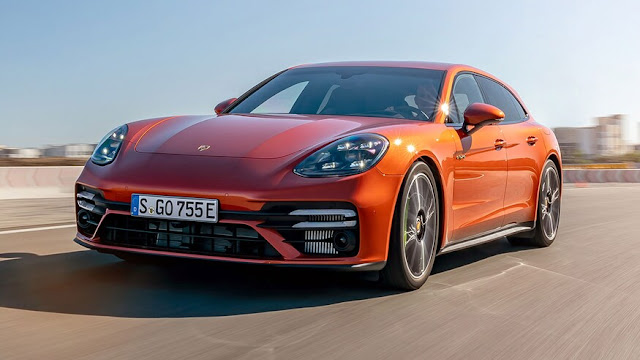It is a simple formula really: Take a common American pickup truck, stuff in more power than it deserves, and have fun. Between the Roadkill and Roadkill Garage shows, we have assembled a triple play of fast haulers, appropriately identified as the original (Chevy) "Muscle Truck" the "Mopar Muscle Truck" (MMT) and the "Ford Muscle Truck" (FMT).
These trucks quickly became fan favorites as a group and individually, and continue to appear in Roadkill related content and at Roadkill events. The common thread is that all are short-bed stepsides from the late 60's to early 1970s, built for street performance and all-around vehicular mayhem. Aside of their similarities, each of these muscle trucks has its own personality with distinct differences. Each has a different story to tell, and here they are.

The Original "Muscle Truck"
Starting it all is the 1974 Chevy C-10 long referred to as simply the "Muscle Truck," but lately we added "Original" to distinguish it from the others. This truck was around well before the Roadkill Show, built by Freiburger and Chad Reynolds in a very Roadkill-like 15-day thrash to make it to the GM Performance Parts LSx Shootout way back in 2008. Freiburger already had the truck, bought from a Craiglist ad for $1,500 as an unassembled project, complete with multi-colored body panels from several donor vehicles. The plus here was the blasted and powdercoated chassis and suspension. To make it a candidate for the LSx Shootout, Freiburger also had a modified GM Performance Parts LS6 crate engine left over from dyno testing for Hot Rod magazine. Combining this truck and engine gave birth to what became the Roadkill muscle truck.
The object was low, loud and mean, with modern power via the modified late model LS6 engine. The LS6 was originally the higher-power version of GM's aluminum LS1 engine found in the Z06 C5 Corvette, and offered as a crate engine from GM with a factory rating of 405 horsepower. Freiburger modified this one with a hotter Crane cam (228/232-degrees duration @ 0.050; 0.600-inch lift) and Crane roller rockers. It an MSD engine management system and ignition, along with a BBK aluminum EFI intake manifold. Freiburger conservatively estimates the output at 475 horsepower. As installed in the truck, the engine's screaming exhaust note has become famous, but it was actually a fluke - the last minute result of using whatever parts were at hand when the truck was originally built. Included here were mid-length headers, separated dual three-inch pipes stepped-up to meet 4-inch Dynomax Race Bullet mufflers, all terminating with downturns in front of the rear axle. The combination resulted in a shrill shriek that made driving it great and painful at the same time.

The engine is mated to a full manual valve body Dynamic Racing Transmission's Turbo 400 automatic trans equipped with a Gear Vendor over/underdrive unit. A 4000 rpm stall Art Carr torque converter is sandwiched in-between the engine and trans. You'll find a Ford 9-inch rear end salvaged from an F100 perched over the springs, and though it was originally fitted with a spool and 5.13:1 gears, it was re-geared on Roadkill Garage episode 6 with more drivable 3.73:1 gears and a Detroit Locker differential. In that same episode we made other concessions to luxury, adding insulation, carpeting in the cab, a new Pioneer stereo, rear view mirrors, and we finally got the inoperable rear brakes functional. Although these changes might seem to make the truck milder, the violent, shrieking, long-distance burnout ability remains intact.
An overview of the Muscle Truck would not be complete without a description of the suspension and the resulting low-down stance. Originally the truck was equipped with an Air Ride suspension system up front for a total on-the-dirt slam. For simplicity, that setup was recently replaced with coil springs, with CCP lower and Ride Tech upper control arms. The rear has always been leaf springs with Cal Tracs bars for on the track bite. Lowering at the rear is via the previously mentioned axle flip, which works with a "Z" sectioned frame rail for clearance. The whole mess rides on 17×8-inch Cragar Soft 8 wheels at all four corners, running 225 55r-17 front rubber and 31-inch tall 285 60r-17 tires in the back.
The original Muscle Truck is by far the most well-known of our trio of trucks. We haven't counted them, but we suspect this truck has appeared in more MotorTrend shows than any of our other vehicles. Actually, its video glory began before MotorTrend videos were even a thing. What's next? It is really pretty good the way it is now, but don't be surprised to see it appear in a future show for who-knows-what mods and hijinks.

The warmed-over LS6 engine under the hood is just a buzz-saw, ripping rpm and making power with ease. Better still, the reliability is amazing - nothing breaks or leaks, and it never lets us down.
The multi-color exterior look was not by design - it's because this truck's body was pieced together using salvaged and replacement panels from different sources.
A little bit of a revamp happened to the interior recently, including sound-deadening, carpeting, and new stereo. The brutal B&M ProShifter and stylish OEM Buick GS steering wheel have been there since the beginning.
While the other "muscle trucks" sit high on stock suspension, the original MT hunkers down thanks to custom front a-arms holding 2-inch drop spindles and lowering springs up front, and an axle-over-spring setup at the rear.
My 1974 D100 Mopar Muscle Truck made its debut in episode 15 of Roadkill Garage, where this nearly completed project truck finally hit the road. The backstory on this one actually involves the tale of three similar Dodge trucks, beginning with the Bronze 1977 D100 stepside featured in Roadkill episode 40. I've owned that truck since the mid 1990s, and it has been in fairly continuous use since. The drawback to that one is the model year. In California, anything newer than 1975 requires biannual smog inspection, making modification a difficult if not illegal pursuit. Enter the white 1972 D100 fleetside shortbed seen in the background of many episodes of Roadkill Garage and Roadkill Extra. That was built as a replacement for the original 1977 step side solely for it smog exempt status. When a hit and run incident damaged the '72 fleet, the hunt was on for replacement parts to fix it. That led to the U-Pull Parts yard in Bakersfield, California, where the 1974 D100 stepside now known as the Mopar Muscle Truck was found.
Up on blocks in the salvage yard, the MMT already gave up plenty of parts inside and out. Despite that, a few laps around it showed a real jewel in the rough. The factory paint was remarkably good, the body panels were straight, and the entire truck was amazingly rust free. It didn't take long to realize that this was a much nicer truck than the '72 fleetside I was looking to fix. The fact that it was a factory manual shift truck sealed the deal. Some negotiation with the yard had it bought for $900 and it was saved from the crusher.
To provide the pieces to fix all of these trucks, yet another one was acquired just as a parts truck—the black 1975 D100 that was featured as the stripped-out Truck Buggy in episode 3 of Roadkill Garage. That one came in trade for a set of cylinder heads, complete but un-registerable with massive DMV back fees and an ancient bank lien. Many of the parts for the MMT came from this parts truck, including the mint front bumper and grill, radiator, fan shroud, power steering, cowl panel, and an untold number of small parts.
Inside the MMT, virtually nothing was salvageable except the odd split-back bench seat for use as a core. The cab was stripped to the bare firewall, insulated, carpeted, and the entire dash, instrument panel, wiring, and a factory A/C system were all built from nice used and wrecking yard pieces. The great thing about this era of Dodge truck is that parts are still cheap and plentiful at the junkyard, but we don't expect that to last. The seat was sent in to a local shop for new upholstery in a very un-Roadkill-like move, but hey, it is a Roadkill Garage project. We have our own rules. Inside the MMT really is "mint."

Under the hood, the 318 engine the truck came with was pulled and replaced with a 360 Mopar small block, I built a few years ago for a feature in the now-defunct Engine Masters magazine. With 10.75:1 compression, a custom Comp solid flat tappet cam, and wild cylinder head and intake manifold porting, the 360 delivered 520 horsepower on the engine dyno. I installed it with Summit long-tube headers leading to a fabricated 3-inch side-hung exhaust using Hooker Aero-Chamber mufflers.
The rest of the drivetrain was assembled from used, salvaged, or fabricated parts. First, the floor-shifted 3-speed manual transmission that came with the truck was replaced with a junkyard A-833 4-speed overdrive trans using a car bellhousing, a used Centerforce clutch, modified OE clutch linkage, and a used OEM Hurst shifter. Overall, the transmission set-up was cheap, but proved to be not so good. The MMT's factory 8 ¼ rear originally just got a welded differential as shown in RKG episode 15, but later was replaced by the 8 ¾ from the laid-up 1972 fleetside truck, complete with a 3.55:1 ratio limited-slip differential. Wheels are salvaged old-school slots that were polished and clear-coated; 15×7 front, and 15×10 rear, with 255 60R-15 and 275 60R-15 tires.
Disaster struck when the 360 engine developed a pinhole coolant leak in cylinder number 3 during the filming of Roadkill Garage episode 20. A hot 318 was swapped in as a stop-gap as featured in Roadkill Extra episode 240, but later changed in Roadkill Garage Episode 21 to the hottest engine yet, a 408 Magnum with 550 horsepower. In that episode the MMT was taken to the track for a shake-down and promptly proved to have an unshiftable trans, an unstable suspension, and then the differential blew. The MMT is really good, but needs to be perfected - maybe in a future episode.
 One Piece 1102
One Piece 1102  Boruto Two Blue Vortex 63
Boruto Two Blue Vortex 63 Boku no Hero Academia 409
Boku no Hero Academia 409 Fairy Tail 100 Years Quest 149
Fairy Tail 100 Years Quest 149 One Piece 1102 News And Spoiler
One Piece 1102 News And Spoiler Black Clover 369
Black Clover 369 Jujutsu Kaisen 246
Jujutsu Kaisen 246
































